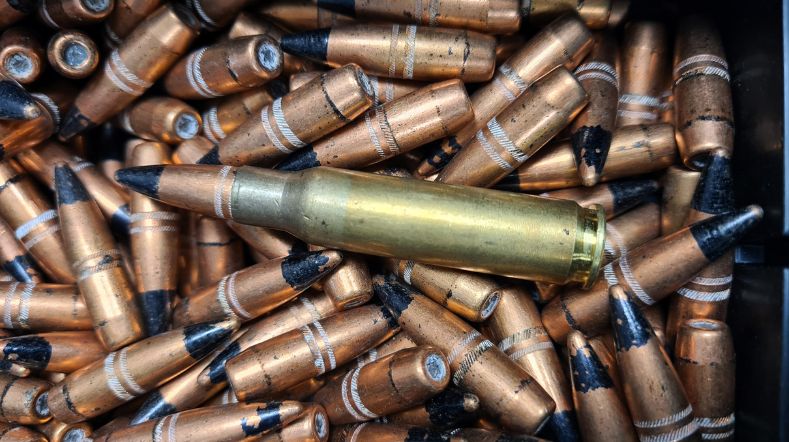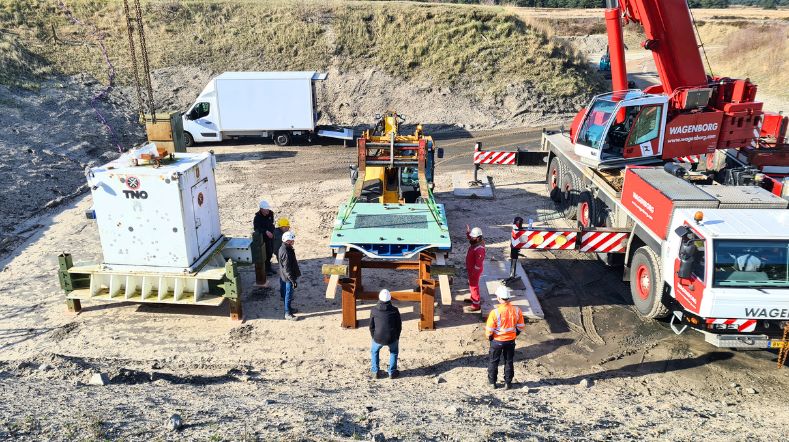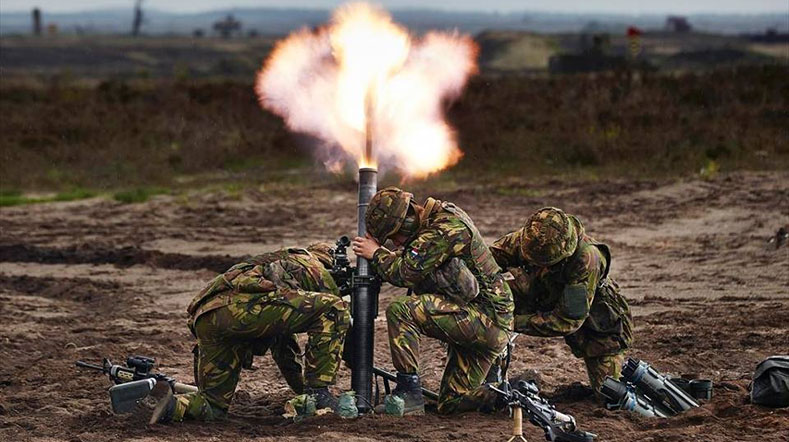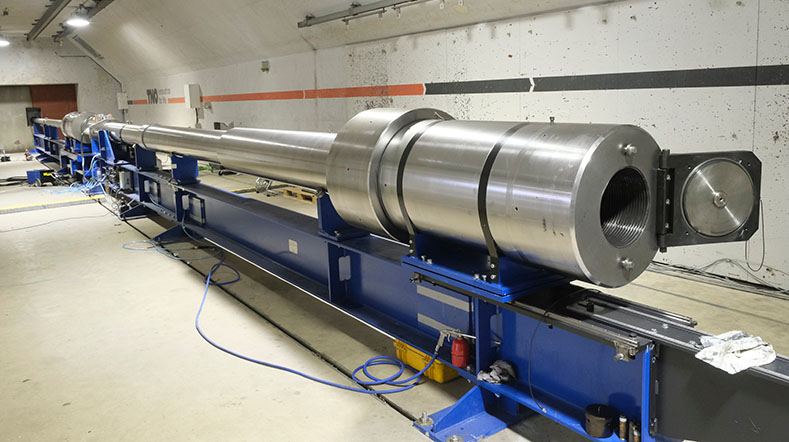Chemical, biological, radiological and nuclear protection
Within the Defence, safety and security field of TNO a dedicated department focuses on Chemical, biological, radiological and nuclear (CBRN) protection. This is a world class research department consisting of about 50 people and a High Tox laboratory that is the only facility in The Netherlands that is allowed by the Chemical Weapons Treaty to produce and handle Chemical Warfare Agents (CWA’s).
TNO is knowledgeable about all parts of the CBRN defence chain: threat analysis, detection, identification, warning & reporting, protection, decontamination, diagnostics and medical countermeasures, all described in more detail below.
The expertise of TNO consists of co-development of detection technology, consultancy and technical evaluation. TNO provides consultancy on requirements, training and standards. Furthermore, we help customers in establishing their own laboratories and gives advice on protocols and equipment. TNO also provides the capability to perform experimental testing and evaluation of chemical detectors.
The chemical detector is tested in a state-of-the-art test facility, using live CWA’s or TIC’s if so required. A dynamic vapour generation system is used for production of vapours at well-defined concentrations of the toxic chemicals of interest. Relative humidity and temperature can be set and controlled within a wide range. Detectors can also be tested in the presence of representative interfering components, such as gasoline vapour and exhaust fumes, to exclude false positive or false negative alarms. A capability to test stand-off detectors in a controlled environment is under development.
Facilities
Our clients and partners benefit from high class facilities. The CBRN department has a laboratory facility for synthesis and working with live CWA’s or Toxic Industrial Chemicals (TIC’s), and a Biosafety Laboratory Level 3 (BSL3) to work with biological agents. The laboratory also functions as the identification laboratory for The Netherlands Ministry of Defence in case of samples of suspected presence of chemical or biological agents.
TNO takes part in the National Anti-Terrorism Laboratory Network. Our researchers are called in case of suspected presence of a CWA the chemical identification laboratory comes into play. Finally, we act as “Designated Laboratory” for the Organization for the Prohibition of Chemical Weapons (OPCW).
Synthesis of materials
The work in our laboratory requires use of highly dangerous chemicals, which are not commercially available. TNO has expertise in the synthesis of very hazardous materials, including highly toxic and/or carcinogenic compounds. TNO also conducts the synthesis of radioactively labelled compounds, including CWA’s and TIC’s. These compounds can be made available commercially for customers as well.
In addition, TNO has comprehensive experience in the preparation of all sorts of degradation products, metabolites and adducts of CWA’s and TIC’s. Finally, we have the capability to design and synthesize novel nerve agent therapeutics, such as oximes.
Biological threat detection and identification
TNO offers support in the procurement, development and technical evaluation of biological sensors and samplers. TNO has the capability to perform testing and evaluation of bio-detection systems. Systems can be challenged in the aerosol phase with simulants, in a 12 m3 (Biological) Aerosol Test chamber, which allows both dynamic and static exposure of detectors and samplers with biological agent at BSL1 level.
Furthermore, TNO performs non-aerosol tests with viable material (such as anthrax) in the BSL3 laboratory. In addition, we can provide consultancy during the biological sensor development. This consultancy may vary from technical advice to support in deriving performance and user requirements.
Warning and reporting, threat analysis
TNO has developed and integrated a variety of models to describe CBRN incidents and the consequences thereof. The ensemble of models (‘a toolbox’) includes dispersion models, casualty prediction, estimation of performance of countermeasures and assessment of critical elements in the whole CBRN defence chain or parts of it, e.g. detector architectures. These models can assist decision makers in planning operations under (threat of) CBRN incidents and in making the right choices and creating situational awareness after an incident. Also, TNO has safe and secure facilities to perform experimental studies, involving behavior of CBRN agents under various circumstances, to validate and improve models.
Research and analysis on the CBRN defence chain in the bigger operational perspective is being performed by the Military Operations department in TNO.
Physical protection
In the area of physical protection TNO provides in-depth expertise on performance and ergonomic aspects of protective equipment, including masks, filters, suits, gloves and boots. TNO advises on procurement strategies (mostly for governments) and participates in various standardization boards. Furthermore, we analyse, evaluate and predict product performance for customers, compare products and develop test strategies. Finally, TNO advises on product innovation: it looks at pre-competitive developments, to support product development of customers and to show the world what is possible.
TNO has a close link to its spin-off company ProQares, that performs the experimental testing of protective equipment.
Decontamination
TNO offers a whole range of testing and evaluation capabilities for decontamination solutions and procedures. For example, TNO performs in vitro evaluation of decontamination solutions with CWA’s (e.g., reaction kinetics) or evaluates the efficacy of decontaminants against micro-organisms.
TNO has a comprehensive track record in evaluation of skin decontaminants including decontamination protocols. TNO can determine the residual amount of agent on and in the skin before and after decontamination. Furthermore, TNO monitors the effects and kinetics of decontamination on (progressive) poisoning by doing in vivo tests, where either blood samples are analysed or agents in the skin are monitored.
Diagnostics and medical countermeasures
Within the medical countermeasures area TNO knows how to develop and evaluate methods for diagnosis of exposure to chemical warfare agents and related compounds. This includes the analysis of intact agents, metabolites and adducts at trace levels in biomedical samples. TNO supports governmental organizations world-wide, inter alia by developing diagnostic protocols, implementing them in our customer’s laboratories and/or by providing them with tailor-made reference compounds.
TNO develops new concepts for medical treatment of chemical exposures, in collaboration with national and international (academic) partners. Also, TNO advises on procurement of pharmaceutical products employing pharmacological and toxicological knowledge.
Partners
In all parts of the CBRN protection chain we cooperate with or are commissioned by a wide range of clients and partners: national and international governments (primarily Ministries of Defence), universities, other research institutes, the European Commission, the European Defence Agency, NATO, and last but not least, the industry!
Get inspired
How the use of passive radars and satellite signals can detect and identify aerial threats


Responsible for safety: the crucial role of the range operator in bulletproof protection


Is the race between protection and weight of Defence vehicles changing?


Prevent mild brain damage (mTBI) in the military? TNO is helping to build knowledge


How does TNO help protect us from hypersonic weapons?




